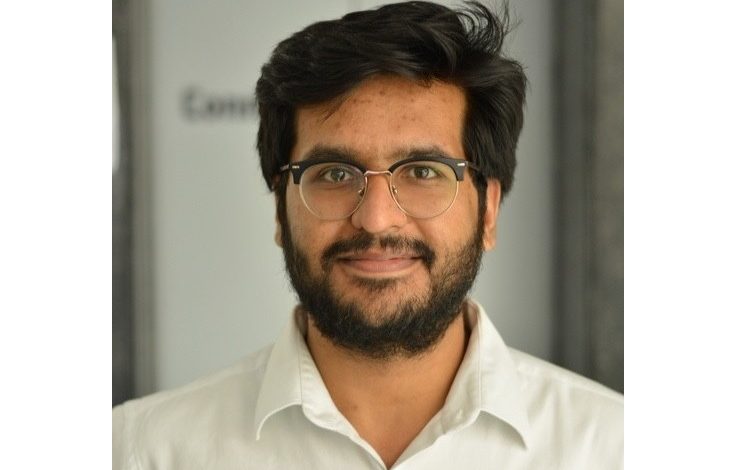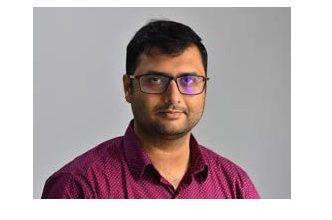Remote monitoring stands poised to significantly influence clinical outcomes

Remote monitoring fosters greater patient engagement by empowering individuals to actively participate in their healthcare management through tracking health data, accessing educational resources, and receiving personalised feedback. Gaurav Parchani, CTO & Co-Founder, Dozee
By Sonali Patranabish
What is the future of remote patient monitoring in India?
The future of remote patient monitoring (RPM) in India looks promising, fuelled by technological advancements, increasing healthcare needs, the impact of the pandemic, government initiatives, private sector investments, and a focus on patient empowerment and engagement.
With the rapid evolution of IoT, wearable devices, and telecommunication infrastructure, RPM offers a cost-effective solution to monitor patients; health remotely, alleviating the burden on healthcare facilities.
The transformative potential of Information and Communication Technology (ICT) is reshaping healthcare delivery and patient care on multiple fronts. Facilitating remote consultations and telemedicine, ICT fosters greater accessibility to healthcare services, particularly for individuals residing in remote or underserved regions.
Government initiatives like the National Digital Health Mission (NDHM) further bolster the integration of RPM into the healthcare system. Private sector investments and startups drive innovation in developing and deploying RPM solutions tailored to the Indian market. However, addressing challenges like data privacy, regulatory hurdles, and the digital divide is essential for fully realising RPM’s potential.
What innovations are currently taking place in the Indian remote monitoring devices landscape?
In the Indian remote monitoring devices landscape, several innovations are underway, transforming how healthcare is delivered and managed. These advancements include integrating remote monitoring devices with wearable technology such as smartwatches and medical-grade wearables, enabling continuous tracking of vital signs and health parameters. Additionally, incorporating artificial intelligence (AI) and machine learning (ML) algorithms allow for the analysis of large datasets to provide actionable insights and personalise treatment plans.
Cloud-based solutions ensure secure storage and real-time synchronisation of patient data, while mobile health (mHealth) apps empower patients to track their health and communicate with healthcare providers remotely. They offer features like symptom tracking, medication reminders, and access to virtual consultations, making healthcare more convenient and accessible. Integration with telemedicine platforms facilitates remote consultations, bridging the gap between remote monitoring and clinical intervention.
What has led to the emergence of the remote monitoring devices market? Is it slated to expand in near future?
The emergence of the remote monitoring devices market can be attributed to several factors, with patient safety being a significant drive and various other factors, including advancements in technology such as IoT and wearable devices, facilitating real-time health monitoring.
This has become crucial due to the increasing prevalence of chronic diseases and the ageing population, necessitating continuous health parameter monitoring and early issue detection. Moreover, the pandemic has accelerated the adoption of remote monitoring solutions, driven by the need to minimise in-person interactions and mitigate the burden on healthcare facilities.
The COVID-19 pandemic accelerated the adoption of remote monitoring devices as healthcare systems sought to minimize in-person interactions to reduce the risk of transmission. Remote monitoring allows healthcare providers to monitor patients remotely while maintaining social distancing protocols.
Government initiatives promoting digital health and telemedicine have further spurred the growth of this market.
Looking ahead, factors like the expanding adoption of telemedicine, rising healthcare expenditures, and technological innovations integrating AI and machine learning are expected to propel the remote monitoring devices market’s expansion. Additionally, the increasing emphasis on preventive healthcare and personalised medicine is likely to boost demand for remote monitoring solutions, highlighting a promising future for the market.
How will remote monitoring affect clinical outcomes and doctor-patient interaction?
Remote monitoring stands poised to significantly influence clinical outcomes and doctor-patient interactions in the healthcare landscape. By allowing healthcare providers to continuously monitor patients’ health parameters and detect early signs of complications, remote monitoring facilitates proactive interventions, adjustments to treatment plans, and preventive measures, ultimately leading to enhanced clinical outcomes and reduced hospital re-admissions.
Furthermore, remote monitoring fosters greater patient engagement by empowering individuals to actively participate in their healthcare management through tracking health data, accessing educational resources, and receiving personalised feedback. Moreover, remote monitoring eliminates geographical barriers, enabling patients in rural or underserved areas to access healthcare services remotely and consult with healthcare providers without the need for travel. This, in turn, optimises resource utilisation, reduces healthcare costs, and strengthens doctor-patient communication by facilitating regular interactions, addressing concerns, and fostering trust and collaboration in healthcare decision-making processes.
Out-of-home care and hospitals, which is the target audience readily embracing remote monitoring devices?
Remote patient monitoring enhances healthcare accessibility which extends to both out-of-home care and hospitals, although we have seen higher adoption of Dozee’s RPM in hospitals. The target groups that benefit most from remote interventions include individuals who are immunocompromised, physical conditions that limit mobility, face challenges with transportation, patients who prefer telehealth services, and the ones who are at greater risk of contagion.
In summary, while both out-of-home care recipients and hospitals are key target audiences for remote monitoring devices, the extent to which they readily embrace this technology may vary based on their specific needs, priorities, and operational requirements.
What is the percentage of data accuracy of remote monitoring when compared to manual monitoring or in-hospital monitoring?
The percentage of data accuracy in remote monitoring compared to manual or in-hospital monitoring varies depending on several factors, including the type of remote monitoring device used, the health parameters being monitored, and the specific circumstances of the patient. However, studies have generally shown that remote monitoring devices can achieve a high level of accuracy comparable to or even surpass that of manual or in-hospital monitoring in many cases.
What are the different kinds of devices being developed under remote monitoring devices?
India faces significant challenges in healthcare due to a stark disparity between the demand for resources and the patient load. The doctor-to-patient and nurse-to-patient ratios underscore the difficulties in providing widespread access to quality healthcare. Addressing this issue requires leveraging technology like remote patient monitoring to scale the potential of existing infrastructure and enhance access to medical services across the country. Remote patient monitoring devices represent a diverse array of innovative solutions designed to monitor and manage various aspects of patient health remotely. From wearable sensors that track vital signs in real-time to sophisticated home monitoring kits and implantable devices, the range of options available continues to expand. Furthermore, the integration of remote patient monitoring systems and telemedicine platforms further enhances the capabilities of these devices, enabling seamless communication between patients and healthcare providers.




